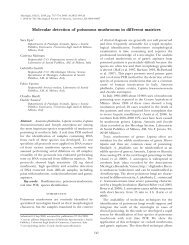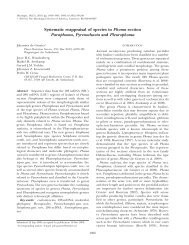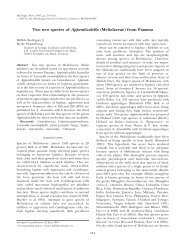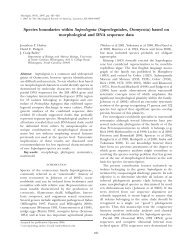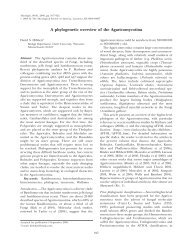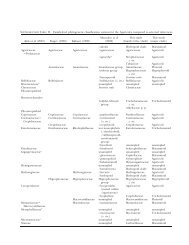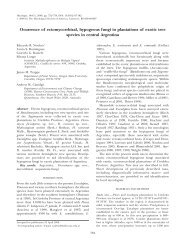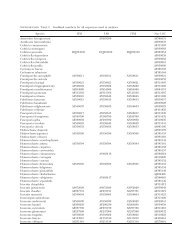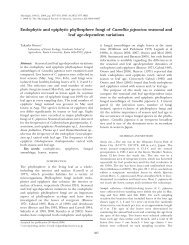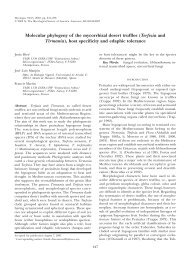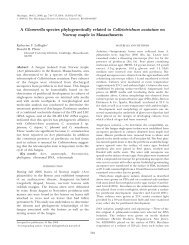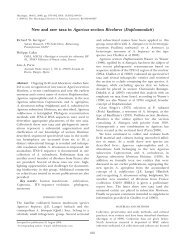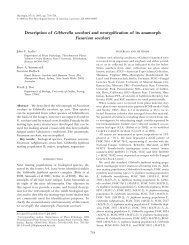Short title: Revision of Morchella taxonomy Taxonomic ... - Mycologia
Short title: Revision of Morchella taxonomy Taxonomic ... - Mycologia
Short title: Revision of Morchella taxonomy Taxonomic ... - Mycologia
Create successful ePaper yourself
Turn your PDF publications into a flip-book with our unique Google optimized e-Paper software.
Comments. <strong>Morchella</strong> esculentoides is the most widely distributed member <strong>of</strong> the genus<br />
in North America and corresponds to phylogenetic species Mes-4 in O'Donnell et al. (2011).<br />
Mature ascomata that have developed normally can be distinguished morphologically from all<br />
other North American species <strong>of</strong> <strong>Morchella</strong>, except M. cryptica, by its medium to large<br />
ascomata, together with the non-rufescent, pale ridges, the generally rounded apex <strong>of</strong> the<br />
hymenophore, and the pits, which are not strictly vertical in arrangement but are not as<br />
asymmetrical and irregular as those <strong>of</strong> M. prava (however, occasional aberrant specimens <strong>of</strong> M.<br />
esculentoides, such as F 04150501, can appear similar to M. prava and must be identified with<br />
molecular analysis). In the Great Lakes region, where the ranges <strong>of</strong> M. cryptica and M.<br />
esculentoides overlap, the two species cannot be separated reliably based on current data without<br />
molecular analysis. (See the comments under M. cryptica for details.) In western regions M.<br />
esculentoides has no close look-alikes, although M. rufobrunnea, which has rufescent ridges, and<br />
M. frustrata, which has a conical hymenophore featuring vertically arranged pits, have similarly<br />
colored hymenophores. <strong>Morchella</strong> esculentoides corresponds (in part) to M. esculenta in Weber<br />
(1995) and to the "Classic North American Yellow Morel" in Kuo (2005).<br />
<strong>Morchella</strong> prava Dewsbury, Moncalvo, J.D. Moore & M. Kuo, sp. nov. FIG. 6<br />
MycoBank MB 563951<br />
Ascomata 50–100 mm alta; capitulum ovoideum cum apice subconico; costae pallidae; hymenium pravium, canae<br />
vel atrae, pallescens aetate; biotopium in silva; sporae 17–21 × 10–12 μm. Holotypus: Biotopium in humo harenoso<br />
sub Pinus strobus L et Acer saccharum Marsh.; USA, in Michiganense, ad Emmet County; M. Kuo & J.D. Moore<br />
col.; specimen typicum in Herb. F (05100602) conservatum.<br />
Etymology. The epithet means crooked, irregular or deformed and reflects the contorted<br />
aspect <strong>of</strong> the hymenophore.<br />
Ascomata 50–100 mm high. Hymenophore 30–60 mm high; 20–50 mm wide at the



